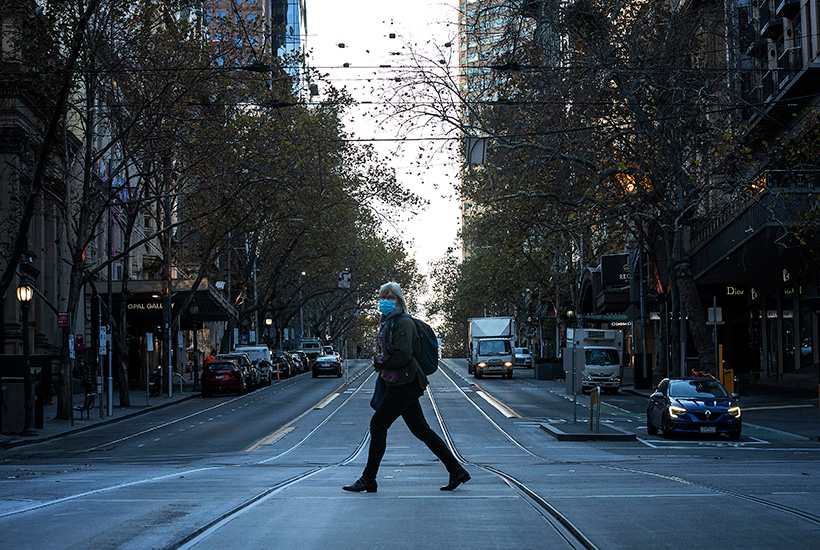Melbourne CBD won’t be back to pre-pandemic levels for several years

Melbourne’s CBD economy will not return to pre-Covid levels until late 2024 or early 2025, when there will still be almost 20,000 fewer people working in the central city than before the pandemic began.
A study by Deloitte Access Economics reveals the flight of workers from Melbourne’s CBD was deeper than other capital city centres in 2020, driven by the more severe lockdown, and will take longer to recover.
The study said Melbourne’s CBD endured an “unprecedented shock” as a result of the pandemic and lockdown, with economic activity more than halving from $75 billion in 2019 to $35 billion in 2020.
But its recovery timeline projects a relatively strong rebound in 2021, up 16.9% to $41 billion, and then a big bounce in 2022 with economic activity jumping by 33% to $55 billion.
By late 2024 or early 2025, it is projected to have returned to its 2019 mark of $75 billion.
Melbourne’s office workers will be slower back to work than other states, and will still be 5.5% or 19,700 workers short of pre-pandemic levels by the end of the five-year forecast period.
Sydney will have about the same number of workers in its CBD by 2025 as there were in 2019, according to the projections.
The study does not factor in Melbourne’s lockdown last month or Sydney’s current lockdown.
Melbourne lord mayor Sally Capp acknowledged that people developing a preference for working from home and the lack of international visitors were significant factors for the CBD to overcome, but said a full rebound was possible in the timeframe outlined in the Deloitte report.
“Many Melbourne businesses have been through the toughest trading conditions in living memory and need our ongoing support to bounce back and thrive again,” Ms Capp said.
The City Council has negotiated a $300 million fund with the Andrews government designed to reinvigorate Melbourne’s CBD, which is considered critical to bolstering the state’s economy.
Ms Capp said the opening of borders and the return of international students were significant opportunities for the city, and Melbourne councillors had developed a 10-year strategy to turn the city around in the wake of Covid-19.

“It’s time to be ambitious about a quick and strong recovery.
“I couldn’t disagree more with those who say the city will never recover,” she said.
“With the right support, the city can grow into a $150bn economy over the next decade.”
The strategy is targeting having 600,000 jobs in the CBD by 2031 compared to the 500,000 employed in 2019, and also having more than quarter of a million residents in the city.
With more than one in five shopfronts vacant in May, the council is targeting reducing that to just 5% by 2031.
Melbourne councillor Roshena Campbell, chair of city activation at the council, said it was a good time for businesses to invest.
“Prior to Covid-19, rental vacancies in the city were at record lows but there has never been a better time to start and grow a business in the city than right now,” Ms Campbell said.
“Competitive rents provide a fantastic opportunity to secure a CBD location for both start-ups and businesses looking to grow.”
While this support will come to the aid of some struggling businesses, others have already succumbed to the loss of custom from office workers.
Melbourne’s first rooftop bar, Madame Brussels, is closing its doors after 15 years, having lost both domestic and international customers.
International visitors to Melbourne have dried up almost completely, and domestic visitors have halved since the start of the pandemic.
This article first appeared on www.theaustralian.com.au.







